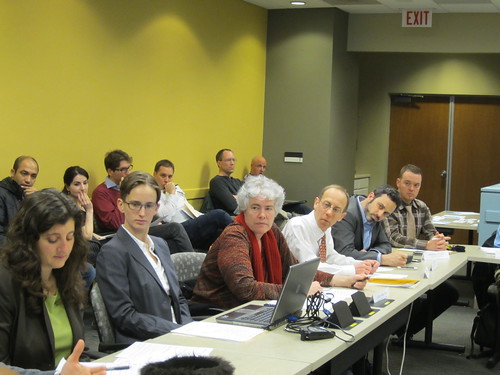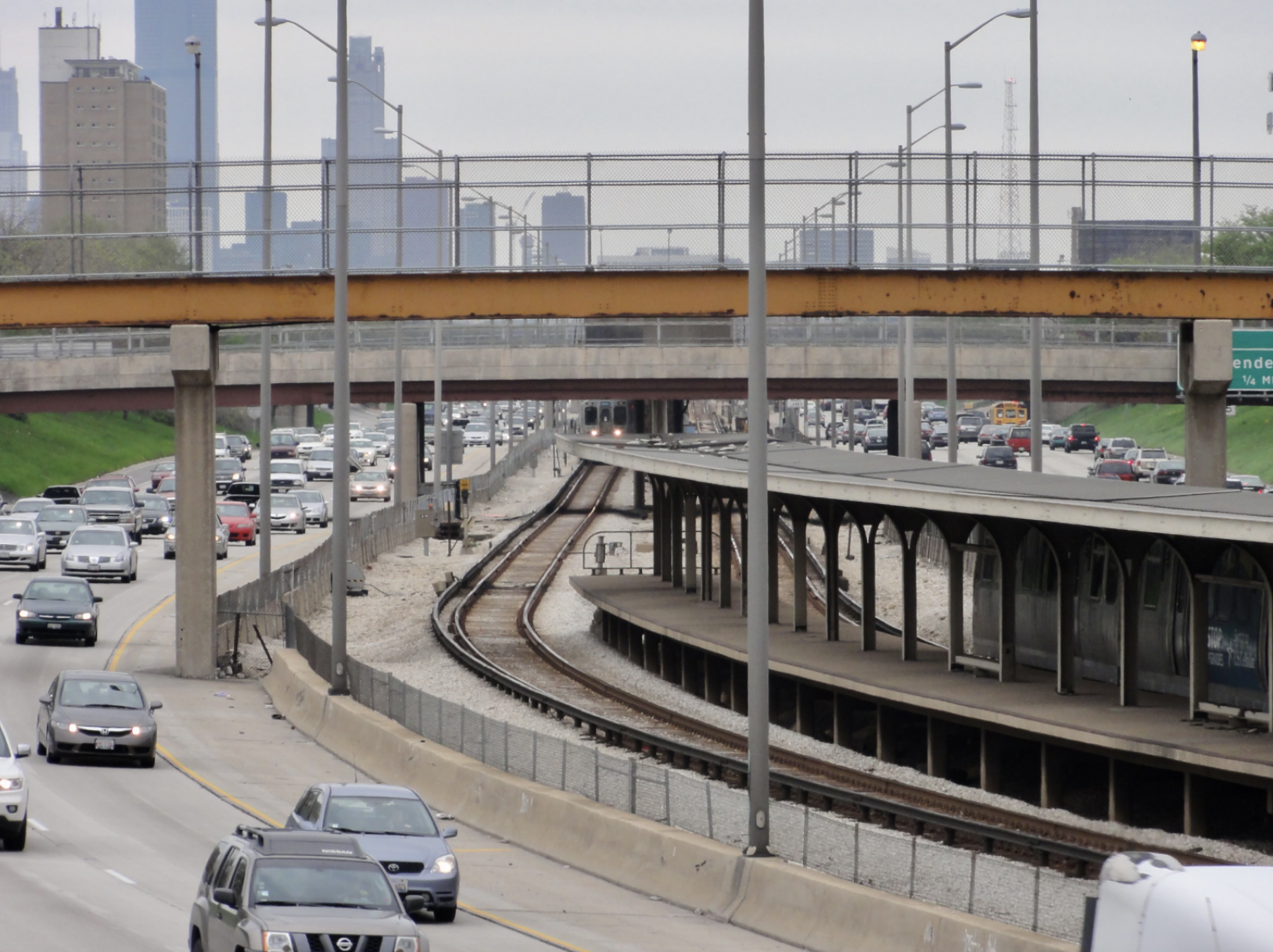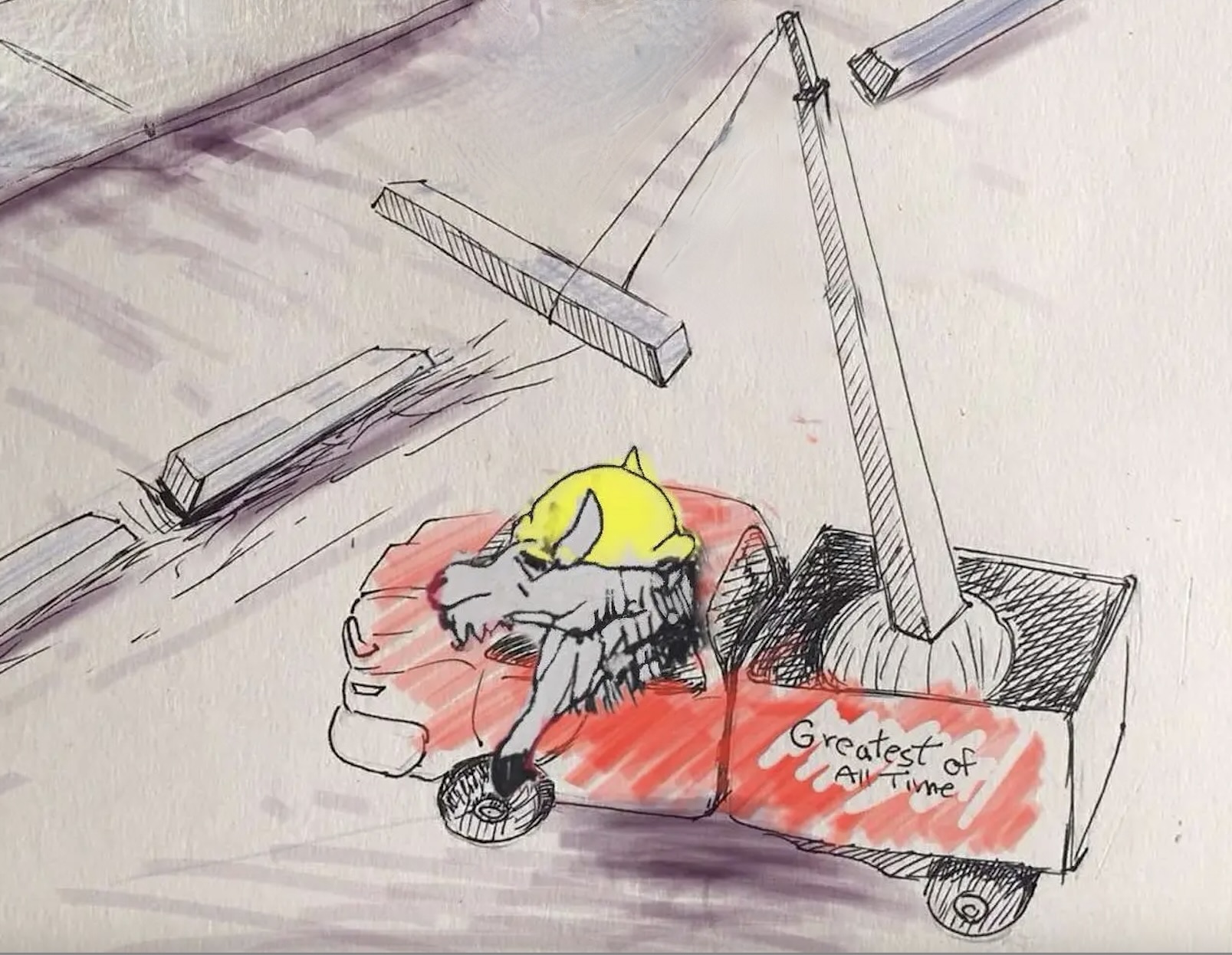The following conversation from Wednesday’s Mayor’s Bicycle Advisory Council meeting is a great example of what can be accomplished when you get some of Chicago’s key transportation planners and advocates in a room together. Many people in the local bike community have been wondering about the legality of cycling outside of a protected bike lane when one is provided. As the Chicago Department of Transportation installs more protected lanes on streets with high ridership, such as Milwaukee Avenue, it’s likely that many faster cyclists will opt to use the main roadway instead.
Jim Freeman, an attorney who specializes in bike case (and a Streetsblog sponsor) recently blogged about this issue. He noted that there is an ordinance in the Chicago municipal code that may indicate cycling outside of protected lanes is illegal:
Section 9-52-020(d) of the Chicago Municipal Code:
"Whenever a usable path for bicycles has been provided adjacent to a roadway, bicycle riders shall use such path and shall not use the roadway."
Freeman worried that this ordinance could be used against cyclists who are involved in a crash while pedaling outside of a protected lane. He brought up the subject at the end of the MBAC meeting, resulting in a lively discussion with CDOT Deputy Commissioner Luann Hamilton, CDOT Project Manager Mike Amsden, CDOT Commissioner Gabe Klein, fellow bike lawyer Brendan Kevenides (also a Streetsblog sponsor), Active Transportation Alliance Executive Director Ron Burke, and Charlie Short, who manages CDOT's Bicycling Ambassadors and Safe Routes Ambassadors programs. They seemed to have resolved the issue: riding outside the bike lane is legal, and we should soon have documentation to prove it. Here's a transcript of the conversation.
View Larger Map
Lakefront Trail next to South Shore Cultural Center
Jim Freeman: So Chicago’s got a statute that says if there’s an adjacent bike path, bicyclists have to use the path and not the street. Is it the city’s position that that applies to protected bike lanes?
Luann Hamilton: No, it doesn’t. The ordinance applies to the Lakefront Trail designation at the South Shore Cultural Center because, when we put that stretch in, the department wanted to make sure that cyclists weren’t in the road by the cultural center. So they put that law in for that one location, but it doesn’t apply to other places.
JF: The concern that I have is that, and I haven’t seen this instance yet, but I could envision an instance where a bicyclist is struck in the street and then they’re issued a citation, in effect blamed for causing or contributing to the [crash] because they were riding in the street and not the protected bike lane.
LH: Actually, if you look at the language we’re OK.
Mike Amsden: It says “adjacent to the roadway.”
LH: This is in the roadway. “Adjacent to the roadway” is not the same thing as a curb lane in the roadway.
Gabe Klein: But it’s a good point, something that we need to talk to [the Illinois Department of Transportation] about, just to say, “Hey, the way things are written in various places, doesn’t really apply to certain infrastructure.”
Brendan Kevenides: Do you know if CDOT’s position with regard to having to use the protected bike lane versus the street is in writing somewhere?
LH: The position is that cyclists can use the whole roadway. Just because we’re putting in these facilities doesn’t mean that bicyclists have to stay in that facility. For example, what if they need to make a turn? They have to go out of the facility at that point anyway.
BK: ‘Cause I have the same concern. For example on Kinzie, especially, and it’s a sliding scale, but where you have that level of division from motorized vehicles, I can imagine a judge who’s considering this saying, “Well, that’s a usable path.” The statute is somewhat vague and wasn’t written when these protected bike lanes came into existence, obviously. So is there something I can look at, something I can cite to?
LH: You can look at the code. I don’t think there’s anything beyond the code right now, but we’ve been having a lot of conversations, not just about bike lanes but about things like pedicabs…
Ron Burke: Would it be helpful if the city’s legal department or someone wrote a memo?
BK: That’d be great.
LH: We can get [the law department] on this. [They've] already written this internally. So we have some documentation.
BK: Wonderful.
Charlie Short: I was going to say, the national trend is to eliminate that sort of language. Because it was written in 1990 when there were only bike paths [in Chicago] and so it made sense. Usually the tendency is to eliminate that language entirely and actually Illinois has eliminated that language.
JF: Does Chicago have a plan to do that?
LH: It only was meant to apply to that one location, so I don’t see any reason why we can’t eliminate it or put clarification in.
JF: Well, I guess we’ll see if it’s a problem then [laughs].
RB: I think what I hear Luann saying is, legally it’s not a problem now. No one’s enforcing it that way, the code is pretty clear. If we can get like a legal memo to that effect which clarifies that, that might be a clearer path forward than trying to change the code. But who knows, maybe there’s some clean-up language going through the city council that you could throw in.
LH: Well, we’re always trying to clean up issues with the city code, right Charlie?
RB: Cool.





